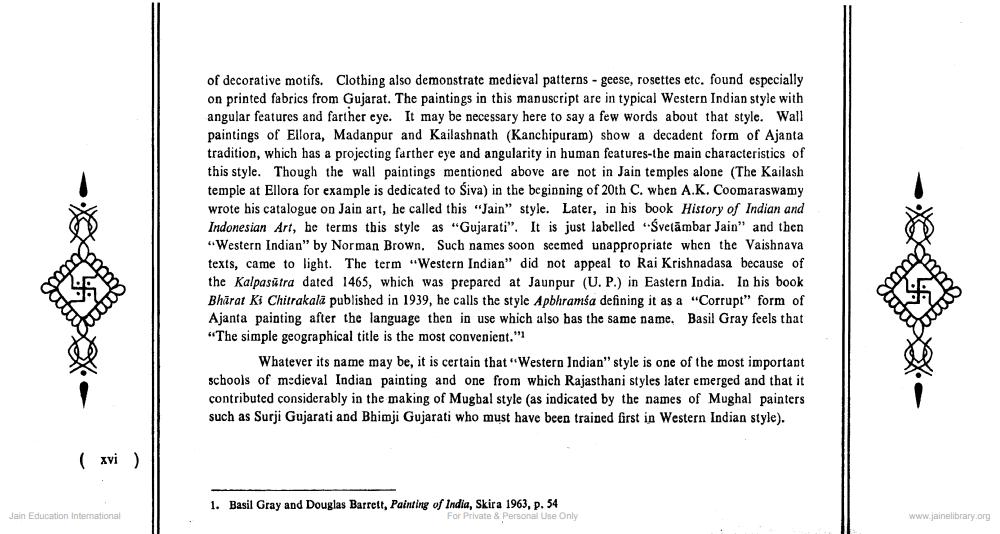________________
( xvi )
Jain Education International
of decorative motifs. Clothing also demonstrate medieval patterns - geese, rosettes etc. found especially on printed fabrics from Gujarat. The paintings in this manuscript are in typical Western Indian style with angular features and farther eye. It may be necessary here to say a few words about that style. Wall paintings of Ellora, Madanpur and Kailashnath (Kanchipuram) show a decadent form of Ajanta tradition, which has a projecting farther eye and angularity in human features-the main characteristics of this style. Though the wall paintings mentioned above are not in Jain temples alone (The Kailash temple at Ellora for example is dedicated to Śiva) in the beginning of 20th C. when A.K. Coomaraswamy wrote his catalogue on Jain art, he called this "Jain" style. Later, in his book History of Indian and Indonesian Art, he terms this style as "Gujarati". It is just labelled "Svetambar Jain" and then "Western Indian" by Norman Brown. Such names soon seemed unappropriate when the Vaishnava texts, came to light. The term "Western Indian" did not appeal to Rai Krishnadasa because of the Kalpasūtra dated 1465, which was prepared at Jaunpur (U. P.) in Eastern India. In his book Bharat Ki Chitrakala published in 1939, he calls the style Apbhramsa defining it as a "Corrupt" form of Ajanta painting after the language then in use which also has the same name. Basil Gray feels that "The simple geographical title is the most convenient."
Whatever its name may be, it is certain that "Western Indian" style is one of the most important schools of medieval Indian painting and one from which Rajasthani styles later emerged and that it contributed considerably in the making of Mugbal style (as indicated by the names of Mughal painters such as Surji Gujarati and Bhimji Gujarati who must have been trained first in Western Indian style).
1. Basil Gray and Douglas Barrett, Painting of India, Skira 1963, p. 54
For Private & Personal Use Only
www.jainelibrary.org




